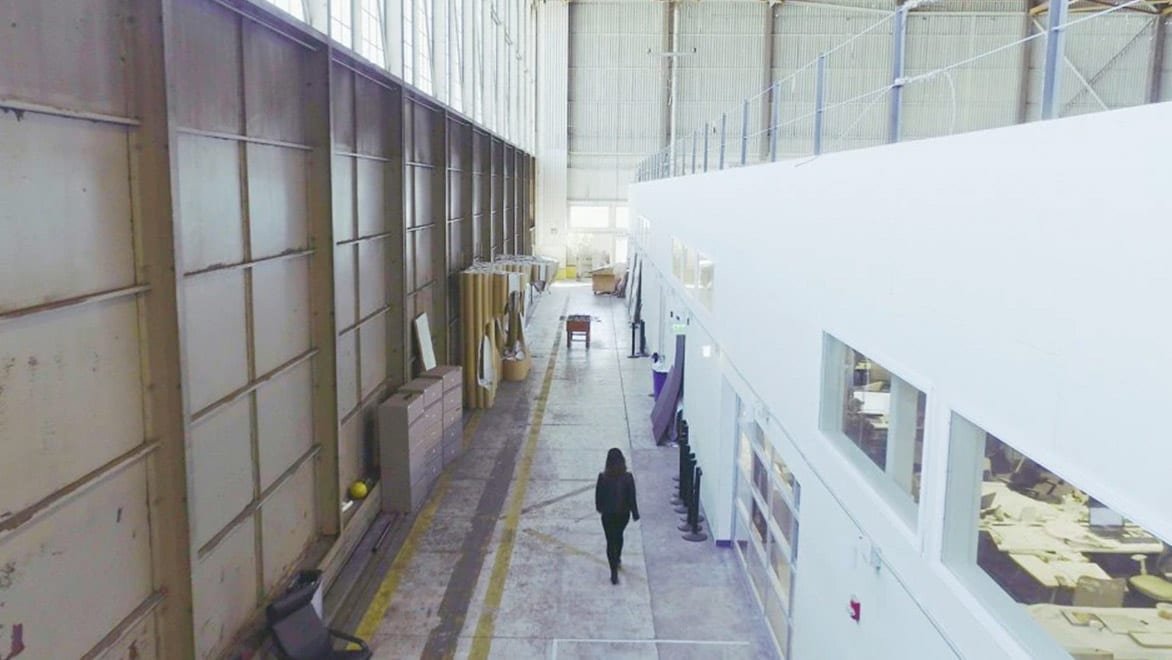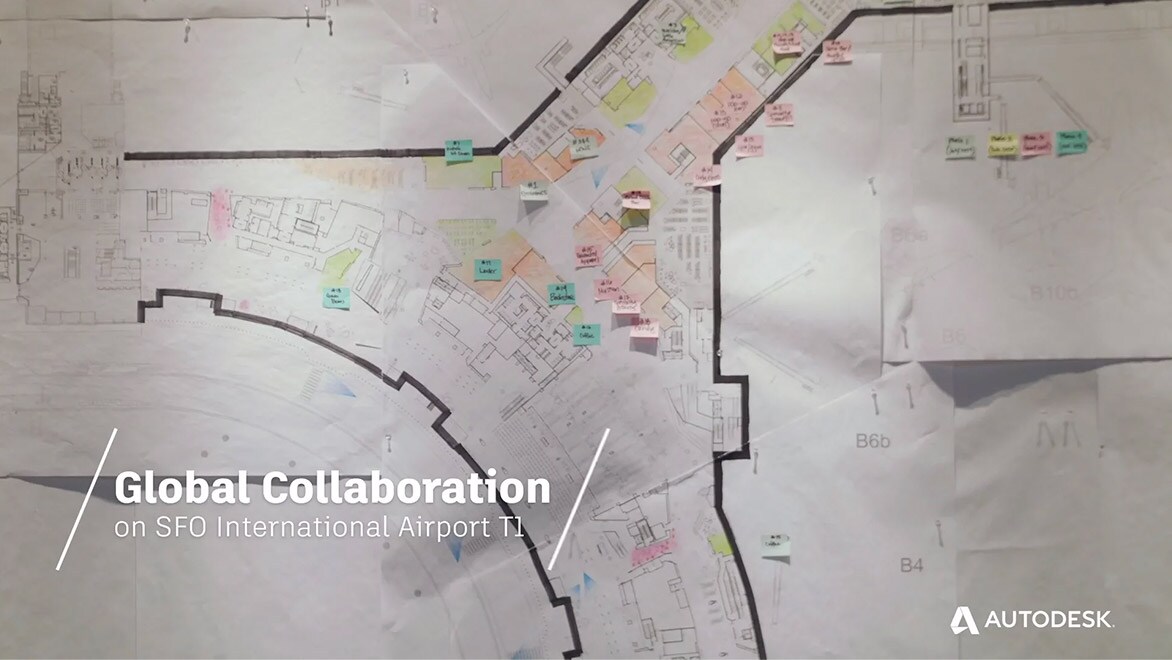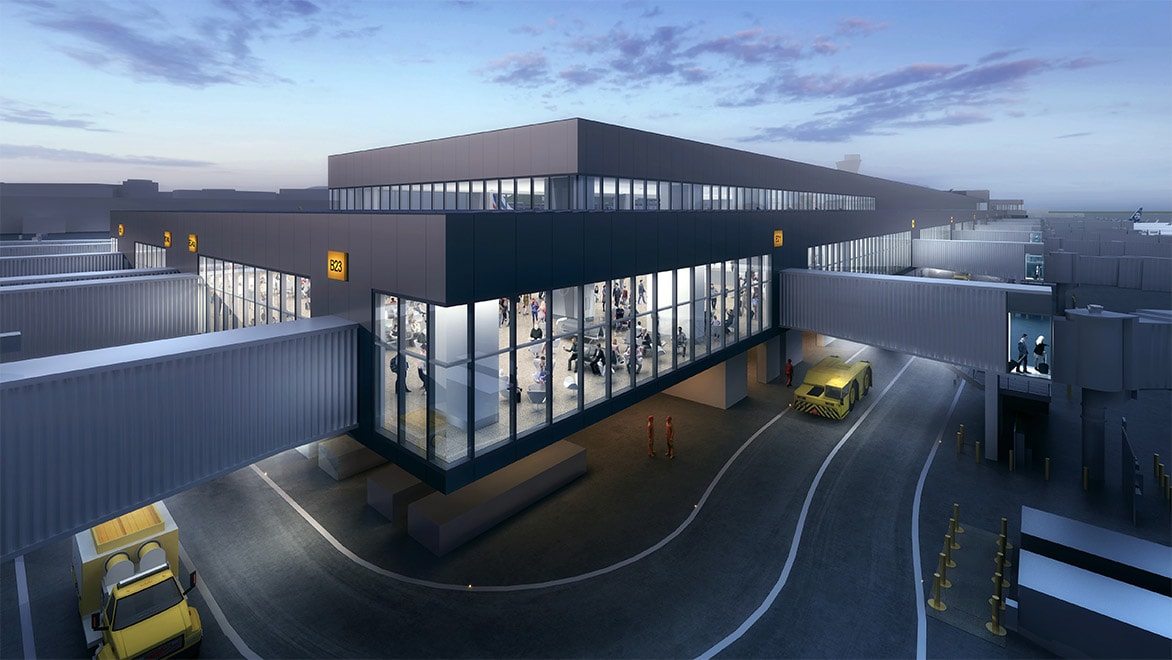BIM 360 DESIGN CASE STUDY
Technology drives major redesign at San Francisco International Airport
SHARE THIS STORY
Redeveloping an entire terminal at one of the world’s busiest airports
To meet the needs of modern travelers and revolutionize the guest experience, San Francisco International Airport (SFO) is redeveloping Terminal 1, one of its oldest terminals. Terminal 1 was built in the early 1960s; over time, it has become less able to accommodate the millions of passengers it welcomes each year.
The core of the project is the construction of a new boarding area totaling more than 500,000 square feet. Boarding Area B will feature 25 new gates, including 7 “swing gates” that give international arrivals direct access to the US Customs and Border Protection Federal Inspection Area. The terminal will also have a new centralized security checkpoint, a state-of-the-art consolidated baggage-handling system, dining and retail concessions, and post-security connecting walkways.
The airport also wanted to raise the bar with a world-class, environmentally friendly project expected to earn LEED Gold certification. Accomplishing this will require tearing down the building and renovating it from scratch. When fully completed in 2022, Terminal 1 is expected to meet or exceed award-winning environmental standards. This will be a six-year, $2.4 billion redesign project—the largest ever undertaken by the airport.
And the goal is to rebuild the entire terminal without ever closing it.
Building the design team
The design joint venture consists of international firms HKS Architects and Woods Bagot, plus local partners ED2 International and Kendall Young Associates, which combined their talents to design and deliver the 25-gate Boarding Area B project. TSAO Design Group served as a primary design subconsultant. Austin Webcor JV, a joint venture of Austin Commercial and Webcor Builders, is responsible for the project’s design management and construction.
With the project owned by the airport and the City and County of San Francisco, key opportunities for the team included integrating a vast body of stakeholder expectations, from wayfinding requirements to Arts Commission needs—all while implementing technical and operation requirements and operational phasing, as well as designing a high-level guest experience, for which SFO is known.
"A project with this level of sophistication requires bringing together the best talent from across the world. Team members collaborating across San Francisco, New York, Melbourne, New Delhi, and Dubai can see the design updating live."
—Pardis Mirmalek, Design Technology Leader, Woods Bagot
Creating the design vision
To develop a collaborative vision for the project, the design team and airport representatives got together in a visioning workshop. Bringing together input from the stakeholders, the team found that its members shared a common vision: They wanted the terminal to have a uniquely San Franciscan feel that captured the romance of travel.
Working with the theme “Bay Area Naturalism,” the team sought to create a relaxed and functional environment that would serve all of the terminal’s future users. According to Woods Bagot director Carsten Voecker, “Terminal 1 is going to be frequented by around 7 million passengers a year, and all of these passengers will find an environment that is tailored for their very own needs.”
With collaboration the key to success, the project kicked off with construction of the “big room,” a 33,000-square-foot structure on the outskirts of the airport. It housed more than 200 designers, engineers, and contractors who would collaborate on and coordinate every step of the project.

A 1960s-era hangar is converted into the “big room” at SFO. Courtesy of Woods Bagot and HKS.
"We needed the right tools to work on a platform where we were up to date and could keep up with the project pace."
—Crystal Barriscale, Regional Director of Urban Design, HKS Architects
Crafting the design-technology framework
Coordinating a multifirm, multiple-stakeholder, public-private partnership on a design-build project for a busy international airport—all while keeping the airport’s daily operations running—was no simple task.
Woods Bagot design-technology leader Pardis Mirmalek emphasizes the need for an integrated framework to enable coordination of multiple design iterations with the project’s numerous stakeholders. “This is a trillion-dollar industry that loses about $100 billion each year,” Mirmalek says. “As creative professionals, we go through hundreds, if not thousands, of design iterations that need to be coordinated across numerous disciplines and stakeholders. That could result in a major loss to building budget and time if not rationalized or set up in an integrated framework.”
Crystal Barriscale, regional director of urban design at HKS, explains: “It was quite a complex team that needed the right tools to work in a platform where we could stay up to date and keep up with the project’s pace. The big challenge was how to collaborate with a 24-person or greater consultant team and a large builder team to deliver the project.”

Teams collaborating on the Terminal 1 project. Courtesy of Woods Bagot and HKS.
"BIM 360 Design helped us bridge the gaps between the four Design JV firms with one common model in the cloud."
—William Wallace, Project Architect, Woods Bagot
Collaboration made easy using cloud-based model
To handle the complexity of the project, the team chose the latest design-technology tools, including BIM 360 Design (formerly Collaboration for Revit) to coordinate globally and across teams, consultants, contractors, and stakeholders. This allowed all of the joint venture teams to keep their own globally distributed studios in sync.
“A project with this level of sophistication requires bringing together the best talent from across the world,” Mirmalek says. “Team members collaborating across San Francisco, New York, Melbourne, New Delhi, and Dubai can see the design updating live.”
BIM 360 streamlined the process from design to delivery, letting studios, contractors, and stakeholders collaborate through one common cloud-based model.
BIM 360 Design
Learn more about what BIM 360 Design can do for your company or download a free trial today.

